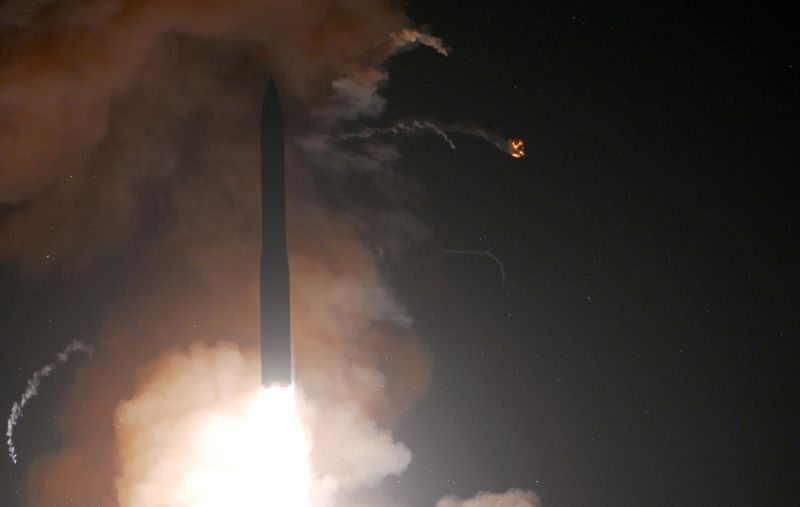The Minuteman missile is a core component of the U.S. nuclear triad originally created in the late 1950s. Minuteman missiles were deployed in underground silos in the Great Plains in the early 1960s to deter a Soviet nuclear attack. Some critics claim the Minuteman is a Cold War era weapon irrelevant to today’s force, but this is not true. In fact, the Minuteman is more applicable to present and future security threats than ever before and must be modernized to continue protecting the U.S. and its allies and partners from emerging global threats.
The modern day Minuteman III is the result of almost 40 years of continuous enhancement. There have been three models of the Minuteman since its creation, and each version increased targeting options and improved accuracy. The modern version of the Minuteman has a range of approximately 8,100 miles (13,000 km) – the exact range is classified. Minuteman missiles are connected to an underground launch center through hardened cables and launch crews consist of two officers on twenty-four hour duty, ready to launch a nuclear missile within two minutes of the president’s order. Also, Minuteman missiles were the first to be equipped with multiple independently targetable reentry vehicles (MIRVs) which means they carry three nuclear warheads at a time (that feature has now been dismantled).
Just because the Minuteman was crafted during the Cold War does not mean it is useless today. During the Cold War, the U.S. focused on one nuclear threat, the Soviet Union. Today, a group of states, and possibly eventually non-state actors, possess nuclear and other weapons of mass destruction. More players in the nuclear weapons game complicate the task of sustaining nuclear deterrence. Furthermore, the New Strategic Arms Reduction Treaty calls for intercontinental ballistic missile force levels of 420 or less – the lowest number in decades. The U.S. ambition to reduce force sizes further complicates balancing complex relationships with nations that have nuclear capability or desire.
The 2010 Nuclear Posture Review (NPR) identified multiple emerging situations in which strategic forces may play a role in deterring adversaries and stabilizing regions and also urged policymakers to begin considering and assessing alternatives for next generation intercontinental ballistic missile. Defense Secretary Chuck Hagel recognizes the importance of the nuclear triad – nuclear weapons practically escaped Pentagon budget deductions. The Pentagon plans to spend billions of dollars revamping nuclear vehicles, missiles, submarines, and bombers that transport warheads.
The Department of Defense currently plans for the Minuteman III force to serve until about 2030. While that may seem like a long time, it takes a decade or more to field a new system. This means research, development, and testing of a new missile must begin soon – especially since fiscal and technical obstacles might slow down any modernization effort.
The U.S. must assure its ability to protect itself and its allies from nuclear agression. One way to do this is by ensuring the Minuteman III evolves to remain relevant to worldwide security threats. Critics need to acknowledge that today’s nuclear threat is potentially more dangerous than during the Cold War due to the increase in the number of nations that possess and desire nuclear capability. The U.S. must maintain its ability to deter nuclear aggression and effectively respond if such an attack were to occur. As the NPR recommended, assessing alternatives for the next generation intercontinental ballistic missile needs to begin now.










